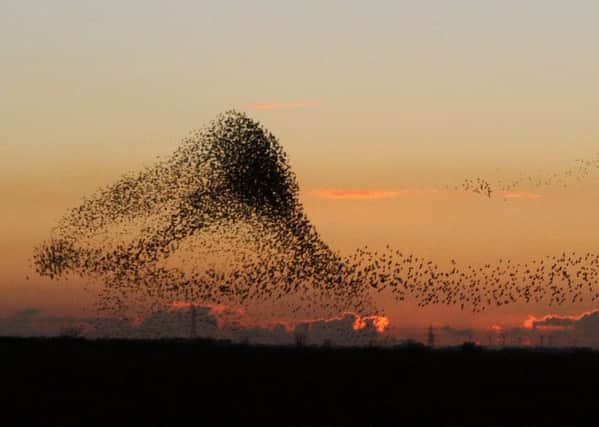Birdwatch: Bid to understand the flight of the starlings


Birders visiting the RSPB’s Blacktoft Sands reserve near Goole to watch marsh and hen harriers coming in towards dusk have been entertained by the spectacle of an estimated 170,000 starlings giving this flying display as they come in to roost a little further down river at Alkborough Flats.
Why starlings perform these displays is not fully understood.
Advertisement
Hide AdAdvertisement
Hide AdThis winter the Society of Biology and University of Gloucestershire have launched a national starling murmuration survey to try and find out why they form and how long they last before the birds plunge down to roost.
It’s also hoped that information can be provided to help stem the decline in starling numbers; 66 per cent since the mid-1970s.
Older readers will recall the huge numbers that used to gather in city centres, much to the ire of local councils, now these are a thing of the past and the remaining starling roosts are in woods and reed beds.
Since the survey was launched last month there’s been 1,000 responses from the public giving details of murmuration sites. These can been seen on a murmuration map, the first every produced in this country, on www.societyofbiology.org/starlingsurvey
Advertisement
Hide AdAdvertisement
Hide AdThe public are being asked to track when murmurations occur, where, what the weather is like, what the temperature is, how long they last and what the birds do at the end of the congregations.
There are several theories for why these aerial displays take place.
One is safety in numbers. Large flocks are vulnerable from attacks by predators such as peregrine falcons but the swirling effect produced by starlings prevents a falcon from picking out any individual to predate.
Also by coming together the starlings are sharing information on roosting sites; the more that are attracted to a particular area the better it is likely to be.
Advertisement
Hide AdAdvertisement
Hide AdRecent sightings in the region have included a female redstart on the beach behind the Riverside Hotel at Kilnsea which could be an Ehrenberg’s redstart, a race found in Turkey and the Caucus mountains.
Waxwings were seen on the Eastfield estate at Scarborough, Whitby and Flamborough Head.
More snow buntings and twite have been seen along the coast and inland at Gouthwaite reservoir above Pateley Bridge and Goole Moors while Lapland buntings have been reported for the second winter running at Burniston near Scarborough; three tundra bean geese have also been seen there. Another bean goose was at the North Cave wetland, East Yorkshire.
The first smew of the winter, a drake, and a scaup were seen on the Tophill Low reserve, East Yorkshire.
The continuing warm weather is confusing some birds with song thrushes and blackcaps heard singing while garden bird stations have been all but abandoned as food in the countryside remains plentiful.